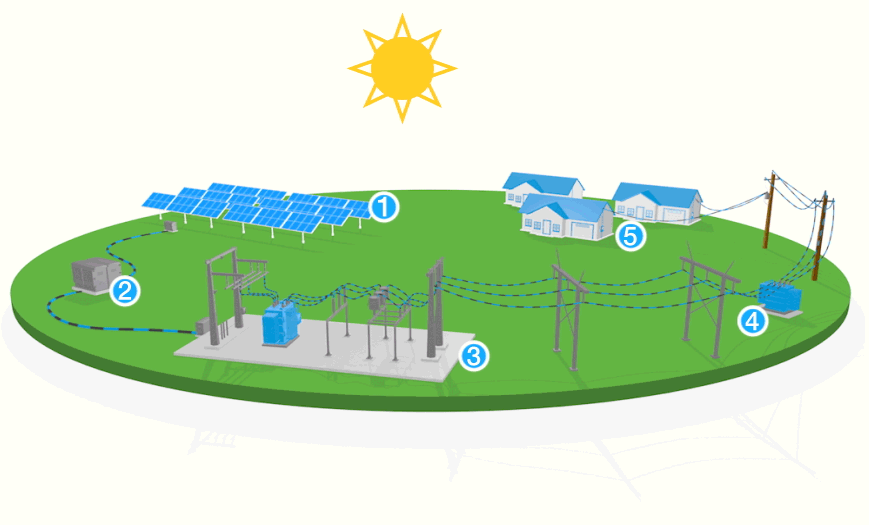What is solar energy used for?
Once converted into electricity, solar energy is used in homes and businesses just like any other form of electricity.
What are some advantages of solar energy?
After the initial investment in solar-energy equipment, the costs are minimal since the sun provides free "fuel." These facilities are not affected by the supply and demand of fuel or subject to price volatility, and solar energy can help reduce America’s dependence on foreign sources of energy. Solar energy is also clean and renewable, which helps protect our environment.
How Does Solar Energy Work?

1. As light hits the solar panels, the solar energy is converted into direct current (DC) electricity.
2. The direct current flows from the panels into power inverters and is converted into altering current (AC) electricity, which is suitable for use by homes and businesses.
3. The AC electricity from the power inverters is collected using cables and delivered to a central electrical substation, where it passes through a power transformer.
4. The electricity travels through transformers, and the voltage is boosted for delivery onto the transmission lines.
5. Clean, renewable, American-made solar electricity is delivered to homes and businesses.
How many solar facilities does your company have and where are they located?
Through its subsidiaries, NextEra Energy Resources is the world’s largest generator of renewable energy from the wind and the sun. We currently have ownership interests in approximately 3,400 MW of operating solar projects (as of Dec. 31, 2021), representing universal-scale solar facilities in 29 states, as well as multiple small-scale (distributed generation) solar projects.
Are solar facilities good for the environment?
Solar energy emits no pollutants and the overall impact of solar on human health is overwhelmingly positive. To learn more, view our solar environment page.
What percentage of generation does solar energy represent in the NextEra Energy Resources' portfolio?
Solar energy represents about 13 percent of NextEra Energy Resources' generation.
What do you look for in a site when building a renewable energy project?
We look for a location with good wind or solar resources, landowners who are interested in hosting our equipment and proximity to transmission lines.
If I have land and want you to assess its suitability for a renewable energy project, how do I get you to come out to look at it?
We cannot guarantee that we will assess every parcel of land presented to us. However, you can contact us for more information.
How much land does a solar project require?
Typically, a project will require 5 to 8 acres of land for each megawatt of solar energy capacity.
Is there construction traffic?
Yes. During construction there will be additional traffic. Although the construction period is only a matter of months, it will require heavy equipment, including bulldozers, graders, trenching machines, concrete trucks, flatbed trucks and large cranes.
How long will it take to complete construction?
It depends on the size of the project. However, 12 to 18 months is a reasonable time frame to build most solar projects.